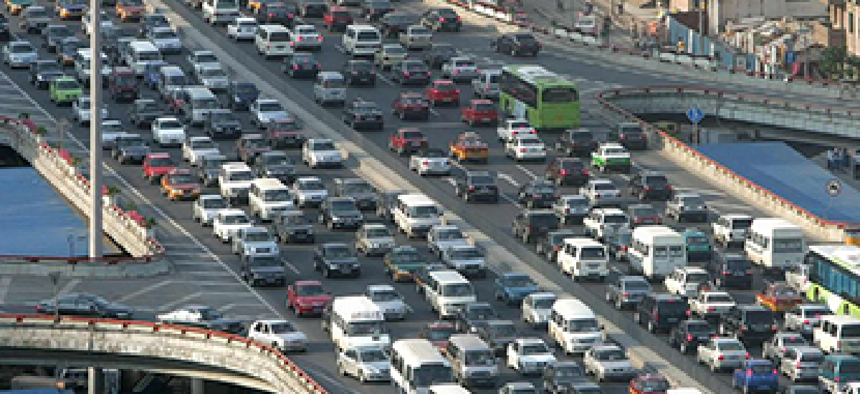China faces the Western New Year

As 2013 dawns, China faces tensions and challenges, Steve Kelman observes.

Traffic in Chinese cities (this picture is from Beijing) is either jammed or reckless at any given time, Steve Kelman reports. (Wikipedia photo)
Chinese New Year (chun jie or “spring festival”) is probably the biggest holiday of the year in China, with people getting from one to two weeks off work, and a mass migration from the big cities back to hometowns all over China. But Western New Year is also an official holiday in China, with people getting January 1 to 3 off from work as well.
China faces the New Year with tensions and challenges, and with new leadership, headed by Xi Jinping, China’s first “princeling” – child of a revolutionary hero -- ruler. (A Chinese friend pointed out to me that with the recent elections in Japan and Korea won by children of previous rulers, the major countries in Asia – China, Japan, South Korea, and North Korea – are all ruled by “dynasties.”)
Interestingly, some of the problems are discussed, with some considerable frankness (to an extent I suspect would surprise most Americans) in Chinese media.
China Daily, an English-language publication that is in some sense China’s official voice to the outside world (it is now published daily in the US as well, and I have noticed that it is often available in piles in the USAirways Club at Reagan National Airport in DC), ran a lead article recently titled, “Economy may suffer as rich look overseas.” The article discusses a theme that has gotten a fair amount of attention in the US media, namely the worries that wealthy people have about China’s future stability, and their increasing tendency to hedge their bets by taking money out of China and trying to get legal residence outside the country. The article centers on the US government EB-5 “investment visa” program, begun in 1990 but now increasingly used by Chinese, that allows foreigners to gain a “green card” allowing them to live and work in the US if they make a $1 million or more investment in the US that is responsible for creating at least 10 jobs over two years. According to the article, 75% of those taking advantage of this program in recent years have been Chinese. As a Chinese friend mentioned to me, the fact that a very large percentage of the country’s political elite send their child (remember China’s one-child limit) to study in the US is hardly a vote of confidence in Chinese education or even society.
China Daily also recently ran an op-ed by Bai Ping, one of the newspaper’s editors, on terrible driving in China (“Why people drive as they do"). As I have written before in this blog, being driven around in China is a harrowing experience – one almost prefers the frequent traffic jams, so that drivers can’t create the risk of death simply because they are unable to drive fast enough to do serious harm.
The article, though, saw a deeper point in the unsafe driving, noting how official cars “legally” drove along the shoulder of the road or in a bicycle lane when traffic was heavy, or covered their license plates to make it impossible for witnesses to officially complain about their behavior. Unsafe driving for Chinese drivers has, in effect, been modeled by the behavior of the powerful. We should, the article concluded, gauge “a nation’s driving behavior by its level of corruption.” Any traffic crackdown, the article stated (this in an “official” newspaper!) “would treat symptoms, not the disease, if we ignore corruption that influences law enforcement and drivers’ behaviors.”
The New York Times had a front-page article over the holidays about the new government’s anti-corruption campaign. I recommended it on my Facebook page, and asked for comments, especially from Chinese, about whether the campaign was serious: with only one exception, respondents (including private emails I received) stated they thought the campaign was only a show.





